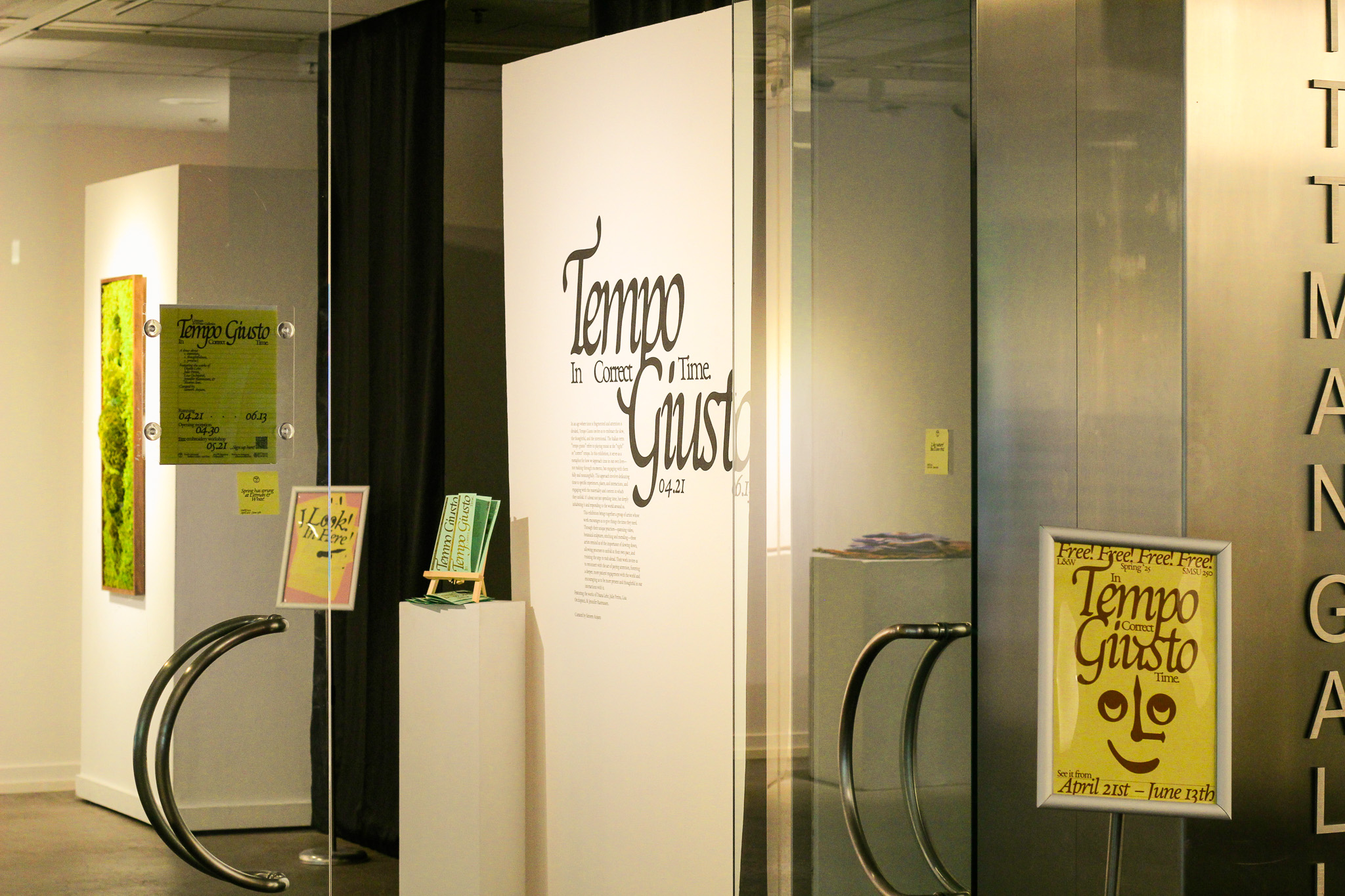Is it radical to desire a pace of living that rejects all notions of urgency and unintentionality?
Tempo Giusto is an Exhibit at the Littman & White Galleries (L&W) located in Smith Memorial Student Union and was curated by Artist Simeen Anjum.
The exhibit’s goal is to embrace the slow, thoughtful and intentional view of art and the world around us. The Italian term, “tempo giusto” refers to playing music at the correct tempo, and in the exhibit at L&W, it is serving as a metaphor for how we view time through our individual lives.
This exhibit has a total of five artists whose work embraces the very concept of being thorough with time. Depicted through a spanning video, botanical sculptures, stitching and mending, these artists all have the same message.
Naomi Nguyen, the Gallery Director at Littman & White Galleries, shared information on how the exhibit came to be.
“It’s called Tempo Giusto which is an Italian term that means in the correct time,” Nguyen said. “It’s a musical term that we wanted to use to describe how [the exhibit] relates to our understanding of time. In our modern environment and modern capitalistic landscape we’re expected to rush through the day without thinking about intentions behind things or considering a different cadence that our day to day activities could take. This exhibition is about creating the time and space to have those reflections.”
The artists featured in this exhibit are Diana Lehr—a visual artist known in multidisciplinary art, Julie Perini—a filmmaker and community based media maker and writer, Lisa Occhipinti—a sewist and designer, Jennifer Rasmussen—a florist and artist, and Sharon Svec — a printmaker and artist.
“As a lover of moss and of the Pacific Northwest, I love the Untitled Moss pieces, they were made by Jennifer Rasmussen […] I just love staring into them and I feel like green is a very therapeutic color,” Nguyen said. “They were made with the intention of creating a space of reflection indoors in a place where there’s lots of concrete and metal and materials that are less of the earth and more industry.”
Falmatu Bilata is a PSU Student majoring in Public Health who stumbled upon the gallery on her way to work. She was also drawn to the greenery pieces after walking through the gallery.
“My favorite piece is the Untitled moss piece, it reminds me of nature and it feels like stepping outside without really needing to,” Bilata explained. “There is a lot outside that you can see and make into art, art isn’t restrictive.”
Maxwell Mitchell, a PSU Student majoring in English, dove into the deeper message and takeaway that the exhibit left him with.
“The ‘Simone De Beauvoir The Second Sex’ piece was really interesting to me. I think in the context of this whole gallery and in relation to what I’ve seen and how things that are recorded are preserved forever,” Mitchell said. “Especially with the projector piece we saw, it’s a small moment that’s blown up in a microscale and repeated over and over again. […] The Second Sex [piece] is the antithesis of that because when you’re reading the quote, you’re expected to cross out what you’ve just read—or pick things to cross out and thus by doing that you’re in turn crossing out information for the next person who decides to read. So you’re the last person to read that passage—and it becomes kind of personal. […] Nobody has access to it aside from you.”
Mitchell is referring to how Simone De Beauvoir’s The Second Sex was laid out on a stand with a marker and paper next to it. The paper read, “You are invited to take time to alter the text before you. Begin slowly, engage meaningfully and allow the seconds to pass. Choose a sentence or paragraph or entire page. Read it through once or twice. Cross out any word or words that do not resonate with you. What you do not ink out is what you choose to leave behind as readable, forming a second rendering.”
In The Second Sex, Simone de Beauvoir analyzes both the historical and the societal construction of femininity, and argues that women are not born “feminine” but that this idea of femininity is taught through social and cultural conditioning. It is a formative work in feminist theory that profoundly influenced the feminist movement.
“I think the idea of repetition is very important to [this exhibit], the idea of recorded small moments, the idea of a memory […], and the idea of examined life and how these things are examined through our own lens and filtered through our own perception and understanding of how the world works,” Mitchell explained. “We walk away picking up on things we didn’t really think we could grasp on our own. It’s like the basis of things like art in general, it’s almost as if you’re experiencing a dream with anyone else who decides to visit.”
